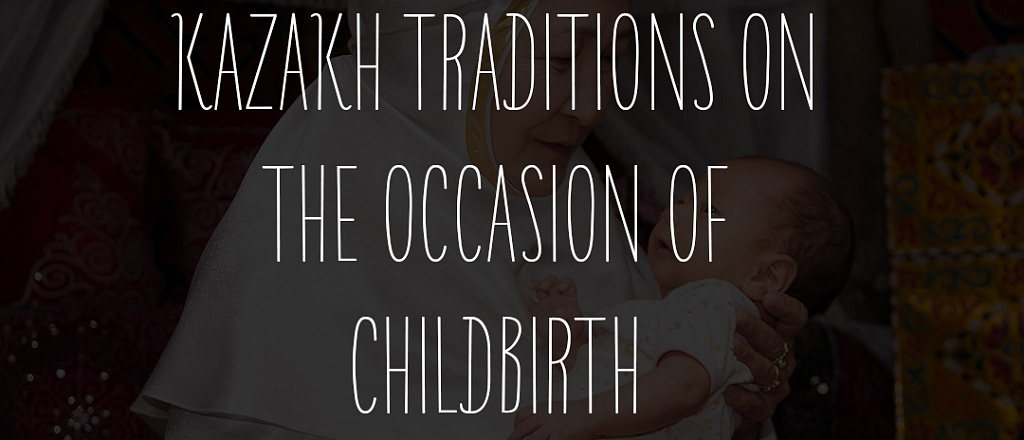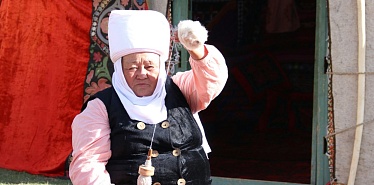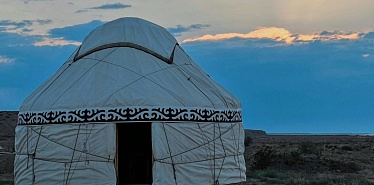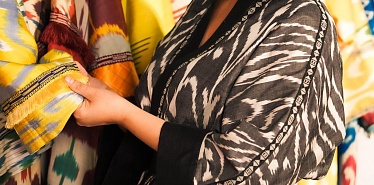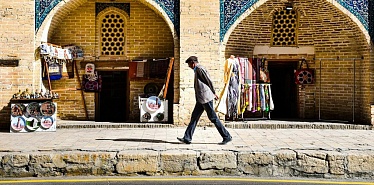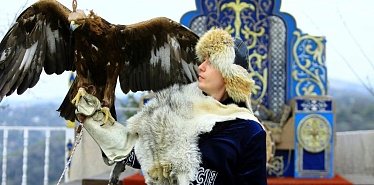Childbirth is always a great occasion not only for a woman who gives birth but for all the family members and close friends. WE are going to tell you about the traditions prevalent in Kazakhstan for a newborn baby.
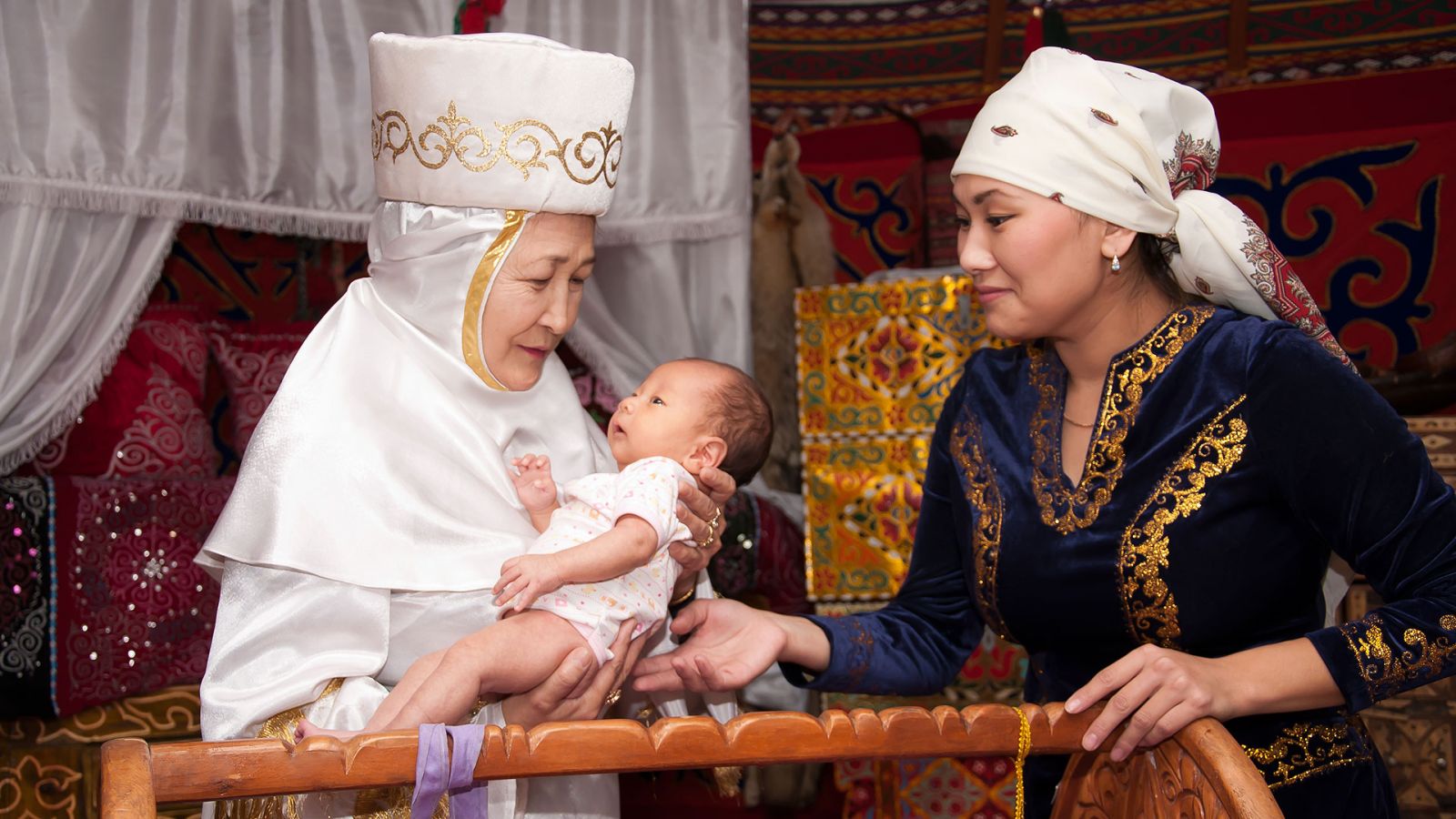
Source: mfa.gov
Kazakh people, as any other nationalities, pay a great attention to customs, rituals and traditions passed from one generation to another. This is so especially when it concerns a baby.
After the child is born, adults have to put him or in a cradle (“besik”) but before it, they have to lighten it in order to prevent the baby from bad spirits.
It is believed that the first forty days are very important for a child because
their body and soul are very sensitive
The life in the first forty days is the first stage for every person when they adapt to new environment and life in general. In most of the cases, people don’t show the child to other people from outside family, they don’t take photos of baby, and they put ash (“kuye”) on the forehead to keep any bad luck away from them (“koz timesin”).
For the boys, the ceremony is performed after they reach thirty one day because it is believed that they become strong and brave man in this time period. In contrast, for girls, it will be on forty-one day. Kazakhs do ceremony called “Kyrkynan shygaru” (“Passing forty days”) and on this day, woman family members gather the child is bathed in salty water.
Firstly, they fill a bucket with forty spoons of water, put new and shiny coins or jewelries which symbolize purity and bright future for the child. Those things are later given to people present at the ceremony.
In different parts of Kazakhstan, this ritual may slightly differ from other
parts
For example, in some regions, only one woman washes the child wishing all the best for his future, while in some other regions, every woman may wash the baby one by one. Moreover, a Godmother (“Kindik sheshe”) holds the baby during this process.
The next step is cutting nails and hair of a newborn child. It will be done by the most reverent woman gathered on that day. The significance of this ceremony is that Kazakh people believe no one would be able to dominate over this child in his or her future.
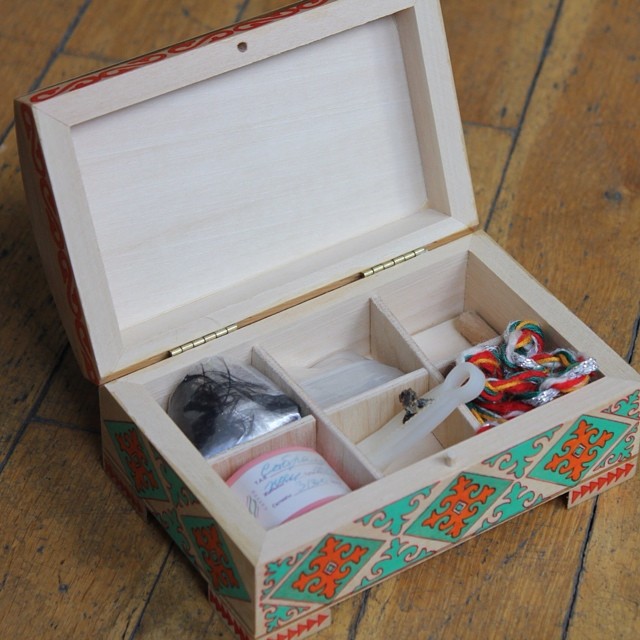
Source: @bopeshkacom
From the very beginning, there was another part of this ritual when Kazakhs collected treats like candies in a small bag and tied to the dog’s neck. After that, all the children tried to catch the bag by running after the dog. However, this part of the tradition is rarely followed these days mainly because of safety reasons.
At the end of the ceremony, all the family members and the close friends will have a happy feast and wish the well being of the mother and the child.
Childbirth is always a great occasion not only for a woman who gives birth but for all the family members and close friends. WE are going to tell you about the traditions prevalent in Kazakhstan for a newborn baby.

Source: mfa.gov
Kazakh people, as any other nationalities, pay a great attention to customs, rituals and traditions passed from one generation to another. This is so especially when it concerns a baby.
After the child is born, adults have to put him or in a cradle (“besik”) but before it, they have to lighten it in order to prevent the baby from bad spirits.
It is believed that the first forty days are very important for a child because
their body and soul are very sensitive
The life in the first forty days is the first stage for every person when they adapt to new environment and life in general. In most of the cases, people don’t show the child to other people from outside family, they don’t take photos of baby, and they put ash (“kuye”) on the forehead to keep any bad luck away from them (“koz timesin”).
For the boys, the ceremony is performed after they reach thirty one day because it is believed that they become strong and brave man in this time period. In contrast, for girls, it will be on forty-one day. Kazakhs do ceremony called “Kyrkynan shygaru” (“Passing forty days”) and on this day, woman family members gather the child is bathed in salty water.
Firstly, they fill a bucket with forty spoons of water, put new and shiny coins or jewelries which symbolize purity and bright future for the child. Those things are later given to people present at the ceremony.
In different parts of Kazakhstan, this ritual may slightly differ from other
parts
For example, in some regions, only one woman washes the child wishing all the best for his future, while in some other regions, every woman may wash the baby one by one. Moreover, a Godmother (“Kindik sheshe”) holds the baby during this process.
The next step is cutting nails and hair of a newborn child. It will be done by the most reverent woman gathered on that day. The significance of this ceremony is that Kazakh people believe no one would be able to dominate over this child in his or her future.

Source: @bopeshkacom
From the very beginning, there was another part of this ritual when Kazakhs collected treats like candies in a small bag and tied to the dog’s neck. After that, all the children tried to catch the bag by running after the dog. However, this part of the tradition is rarely followed these days mainly because of safety reasons.
At the end of the ceremony, all the family members and the close friends will have a happy feast and wish the well being of the mother and the child.
Childbirth is always a great occasion not only for a woman who gives birth but for all the family members and close friends. WE are going to tell you about the traditions prevalent in Kazakhstan for a newborn baby.

Source: mfa.gov
Kazakh people, as any other nationalities, pay a great attention to customs, rituals and traditions passed from one generation to another. This is so especially when it concerns a baby.
After the child is born, adults have to put him or in a cradle (“besik”) but before it, they have to lighten it in order to prevent the baby from bad spirits.
It is believed that the first forty days are very important for a child because
their body and soul are very sensitive
The life in the first forty days is the first stage for every person when they adapt to new environment and life in general. In most of the cases, people don’t show the child to other people from outside family, they don’t take photos of baby, and they put ash (“kuye”) on the forehead to keep any bad luck away from them (“koz timesin”).
For the boys, the ceremony is performed after they reach thirty one day because it is believed that they become strong and brave man in this time period. In contrast, for girls, it will be on forty-one day. Kazakhs do ceremony called “Kyrkynan shygaru” (“Passing forty days”) and on this day, woman family members gather the child is bathed in salty water.
Firstly, they fill a bucket with forty spoons of water, put new and shiny coins or jewelries which symbolize purity and bright future for the child. Those things are later given to people present at the ceremony.
In different parts of Kazakhstan, this ritual may slightly differ from other
parts
For example, in some regions, only one woman washes the child wishing all the best for his future, while in some other regions, every woman may wash the baby one by one. Moreover, a Godmother (“Kindik sheshe”) holds the baby during this process.
The next step is cutting nails and hair of a newborn child. It will be done by the most reverent woman gathered on that day. The significance of this ceremony is that Kazakh people believe no one would be able to dominate over this child in his or her future.

Source: @bopeshkacom
From the very beginning, there was another part of this ritual when Kazakhs collected treats like candies in a small bag and tied to the dog’s neck. After that, all the children tried to catch the bag by running after the dog. However, this part of the tradition is rarely followed these days mainly because of safety reasons.
At the end of the ceremony, all the family members and the close friends will have a happy feast and wish the well being of the mother and the child.






